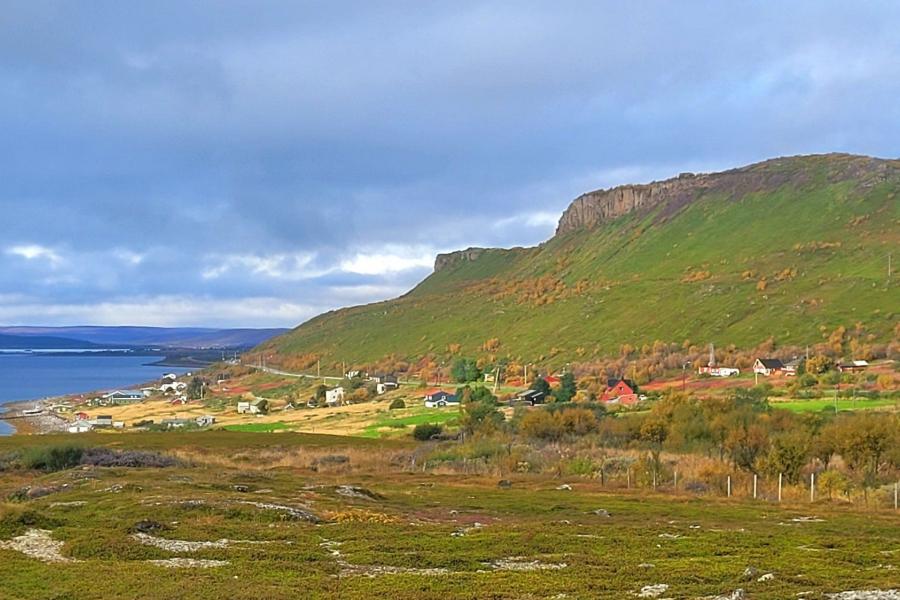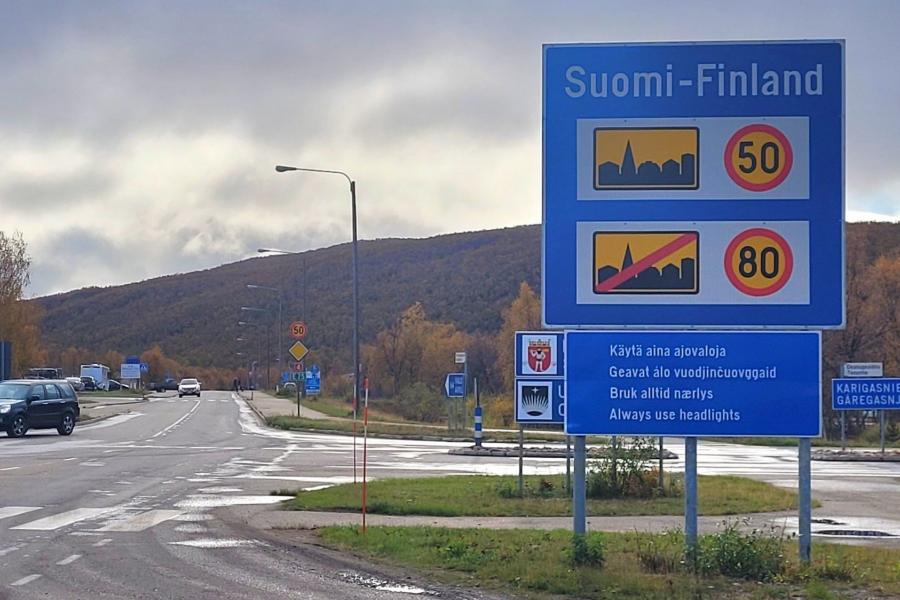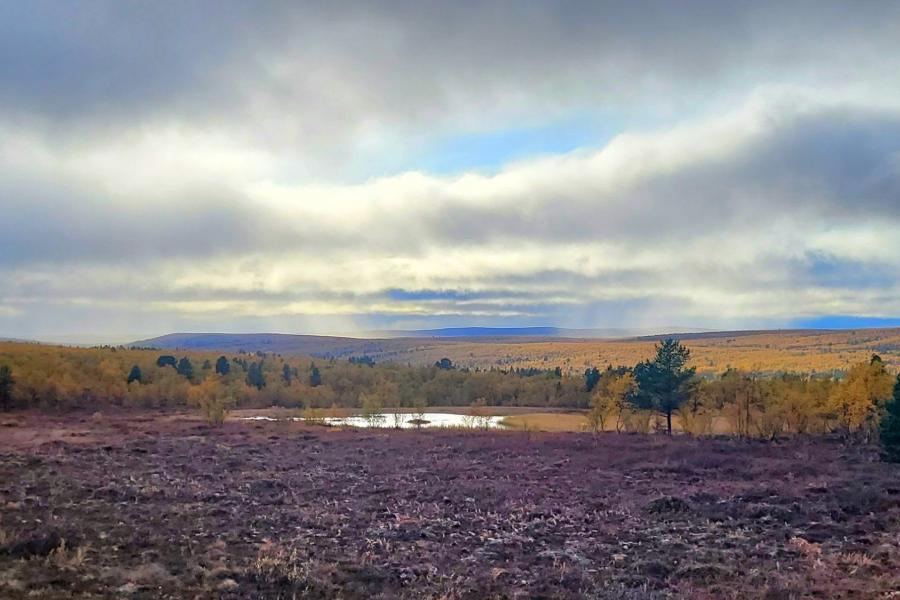DAY 24: VARANGER - INARI, Prehistorics and psychedelica
Country
A rainy morning again, and it suited my wake-up mood, as I had to leave Varanger to head down south. Varanger definitely made an impression on me. I wasn't in a hurry to leave. Maybe it was the peace and quiet, maybe it was the constantly shifting sights, sounds and colours of the bay. Maybe it was just me wanting to relax. In any case, I gathered my belongings, packed the bike and rode off, reluctantly.
As I was running the bike down the coast, the sun came out. And Varanger presented its one last surprise for me. First, I saw another whale playing in the morning sun, over at the eastern side of the bay. I stopped to watch it. Then my attention was drawn to some markings on the shale coast. I had a look around and found some information on a signpost. It was quite a special place I had stumbled upon, an ancient Sami burial site. The graves date back from 400 to 2000 years ago. I can very well imagine why they chose that particular spot, as it overlooks a fjord at the other side of the bay, which catches the full light of the sun.
But this turned out to be only a part of the whole story. Because this particular coastline, which is called Ceavccageceadne (now try to pronounce that while having your morning coffee), hosts a complete prehistoric village that dates back 10.000 years. You can actually see where the first settlers put up their tents. The central piece of the site is the so-called Tear Stone, which is a holy monument not dedicated to something sad and tragic, but to fish oil ('tear of the fish' in old language). It seems the fishermen rubbed the stone to ensure a good catch. That they kept doing so for at least 2000 years, boggles the mind.
Having had a look around and being suitably impressed, I went on my way again with a much improved frame of mind. Yeah, I'm that type of guy that gets his mood lifted by prehistoric burial sites. What can I say. After a few dozen kilometers I made a pitstop at Tana Bru, to restock, have a quick lunch at the Elvekanten Spiseri (damn fine coffee) and to buy myself a Sami hunting knife. That's right, I'm that type of guy that will get a knife as a souvenir and ... Well. What can I say. It's purely ornamental, and such.
Then it was off to the Finnish border. That meant a 150 km ride into the eternal forest. It was cold, as the Finnmarksvidda is expected to be in September. You can feel the frost coming in. The Ruska autumn means the birch trees have now turned a full orange, offset against purple and red tundra. Affter crossing the border, the spruces returned again; I hadn't seen those for at least 10 days. The mountains gradually disappeared, making way for wide plains of stunning autumn colours. Sometimes a lost mountain (the Finnish call them Tunturi) appeared, to preside over the natural splendour around it. Riding through the Finnish forest constitutes an almost psychedelical experience. It's a good thing that, in the middle of all that glory, the Finnish have put up some signs to alert you in detail to the local traffic regulations. Nothing better to keep you grounded and sober.
As I sit here in an almost abandoned holiday camp at Inari (it came cheap and they've got great amenities), I am contemplating my fate. What a lucky guy I am, to leave one great place and run straight into the next one. I almost don't want to l... Oh, not that again.
PS. Looking out over the lake I can see the northern lights over at the horizon. Finnmark is saying goodbye in style.











